Friday
Norfolk Broads with Marcus Nash and Group (1+6)
I have published Marcus's trip report in full below.
The highlight for me was without doubt the 27 Cranes (3+24) we saw.
21st Jan 2022 – Winter & Owls, Day 1
Day 1 of a three day tour combining the best of winter birding with some owls. It was a glorious day – after an early frost it was bright and sunny with light winds. We spent the day down in the Broads.
We met one of the group in Ludham. A little further down the road, we stopped to look at lots of thrushes in the fields either side of us, mainly Fieldfares and a few Redwings. Great views using the minibus as a mobile hide. There were a few Chaffinches, Goldfinches and Linnets along the weedy edge too and a Pied Wagtail.
Continuing on to the end we parked in the small car park and got out to scan the grazing marshes. We could see several swans already from here, mostly Mute Swans but a single Bewick’s Swan was with them. We could see the squared-off yellow on the bill.
Three Common Cranes walked out from out of view behind the reeds. Unfortunately they saw us too and took off, flying back across the marshes and we lost them to view behind the farm buildings. Still, it was a good start to get some Cranes on the list so early.
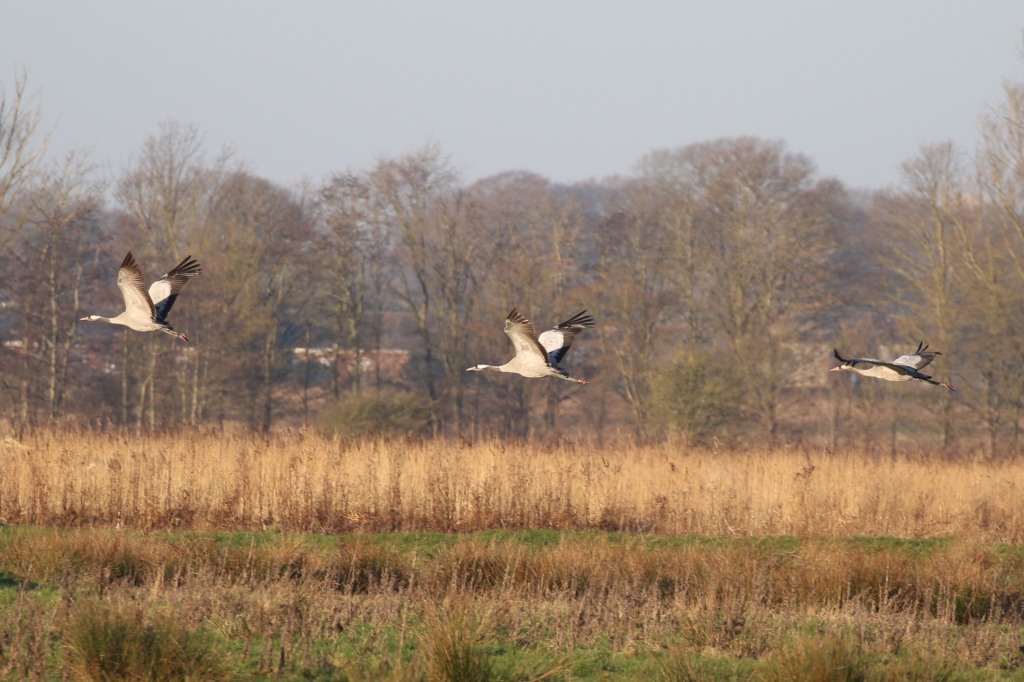
A Common Buzzard was perched in one of the trees and a Marsh Harrier was hunting back and forth over the reeds. The Marsh Harrier was a particularly dark juvenile and when it landed we could just see a small patch of white on the back of its head. A Stock Dove was perched in the bushes too, back onto us we could see its dark terminal tail band.
Up onto the river bank, we could see more swans out on the grazing marshes now. Scanning through, we could see a mixture of Whooper Swans, larger with more yellow extending down the bill to a point, and several more smaller Bewick’s Swans. A good opportunity to see the two species together. The Whooper Swans were quite vocal and there was a bit of pushing and shoving between them.

There were several Chinese Water Deer out on the marshes too, a species which seems to be doing very well. We would see a lot today. A Fox was a much less common sight – it looked to have found something in the grass and was staring intently down at the ground. A good start to the tour mammal list!
Three geese flew away from us and dropped down over by St Benet’s Abbey, so we drove round to see if we could refind them. When we got out in the Abbey car park there appeared to be no sign now. Several Common Snipe came up from the field by the car park and Song Thrush flew out of the bushes. We were just getting back into the minibus when the geese flew up from behind the farm building. We were looking straight into the sun, but they were calling now and sounded like Pink-footed Geese as they disappeared off. Worth a look anyway.
Driving on into the Broads, we took a detour round via where some Common Cranes have been feeding in the fields recently. There was no sign in the area they have been favouring, just a large covey of Red-legged Partridges in the stubble. We tried down another side road, but drew a blank there too. Then, as we were making our way back, still scanning the fields just in case, we spotted the Cranes way off in the distance.
We managed to get closer to the Cranes by driving down another side road and found somewhere to park where we were still far enough away so as not to disturb them. We got out and got the scopes on them. We counted 24, and could see one bird with brightly coloured plastic rings on its legs. This bird has been hanging around here for a while now with this group of Broadland Cranes. It was actually ringed as a juvenile in Finland in 2020 and, after spending the winter in Spain, was first seen here in April 2021, having presumably drifted over the channel on its northbound migration. It has stayed here ever since. Amazing!

We were watching the Common Cranes when we could see they started to look agitated, walking out of the edge of the maize where they were feeding. Then they all took off, probably spooked by a detectorist in a nearby field, and 22 of them flew over towards us. Always an amazing sight, to see a large flock like this in the Broadland skies, having re-established themselves here after hundreds of years absence.
Some of the Cranes dropped down out of view, but most of the flock landed again much closer to us, a couple of fields over. Although we were slightly looking into the sun now, it was a great view through the scopes as they strutted around in the stubble.

It was definitely a lucky morning for Cranes for us today, and always a real privilege to watch them here. But we had to tear ourselves away and moved on, down to Buckenham next. As we drove down, we stopped briefly to admire two pairs of Mistle Thrushes in the paddocks by the road.
We climbed up onto the riverbank by the fishermen’s car park to scan the grazing marshes. The Taiga Bean Geese seem to have departed a few days ago, but there was a Tundra Bean Goose reported here yesterday. We could see lots of Pink-footed Geese now, but couldn’t see anything obvious in with them, although large numbers were hidden from view behind the rushes. There were several groups of Canada Geese too and eight Barnacle Geese, but no sign of any White-fronted Geese this morning.
There were lots of Wigeon out on the grass, looking stunning in the sunshine, and more around the pools the other side, along with some Shoveler and Teal. We could see several Shelduck right out in the middle of the grazing marshes too.
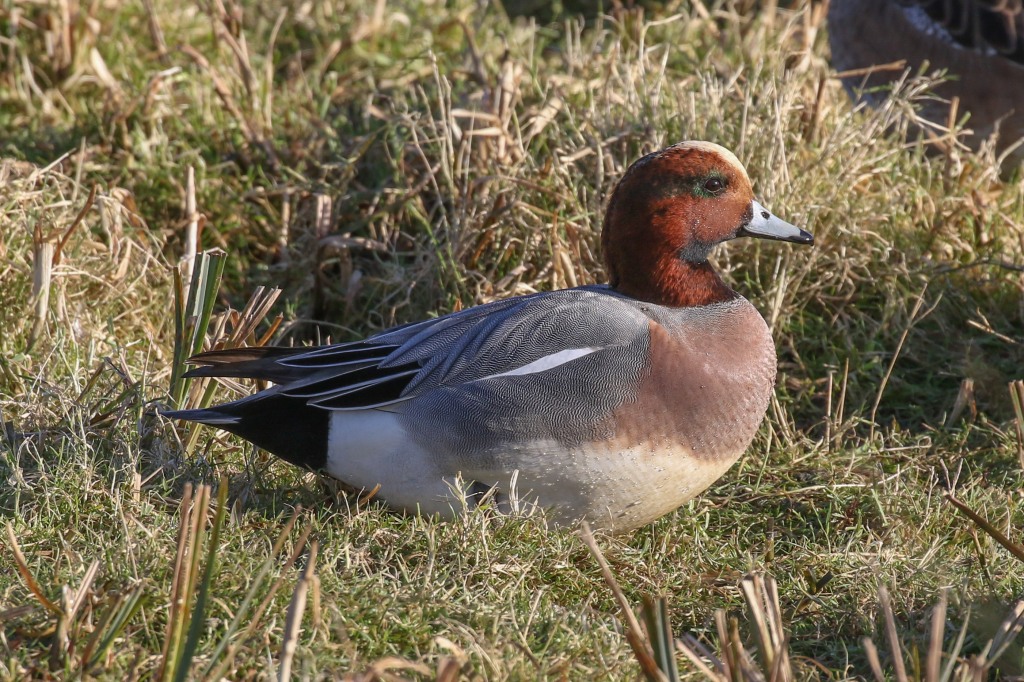
A Common Buzzard was perched on a post in the sunshine, with a Grey Heron doing the same nearby and another across the river. A huge flock of Lapwings came up from Cantley in the distance, and the still sizeable flocks erupted here from time to time as well.
After a very successful morning, we headed round to Strumpshaw next for an early lunch. As usual, lots of tits were coming and going from the feeders, and we had great views of several Marsh Tits, as well as a single Coal Tit, while we were eating. A Song Thrush and a couple of Blackbirds were feasting on ivy berries nearby. A Great Spotted Woodpecker flew over. After a hard frost overnight, Reception pool was still largely frozen and there were just a few Coot on there today.

We had no time to explore the reserve here today, as we had an appointment with some owls this afternoon. Back to the minibus and we drove over to Winterton. Parking in the car park, it was amazing to see how much has been lost over the winter. a huge area of the sandy cliffs has been washed away in the storms. We stopped to look – there were several Sanderlings running around on the beach beyond and a hybrid Hooded Crow, with ghosting of a grey nape, accompanying a Carrion Crow below the cliff. A distant Guillemot flew past offshore.
Time was pressing, so we set off north through the dunes. The Short-eared Owls were already out, and we quickly spotted one hunting in the distance ahead of us. We walked up, and watched it flying round. It hovered and dropped down sharply and when it came back up we could see it had a vole in its talons.
It was difficult to know just how many Short-eared Owls there were out today. One came back round past us, and we saw it land on a post further up. While we were trying to get it in the scopes, it seemed to drop down and disappear. We walked over, but there was no sign until one came in high right above us, and looped round over where the other one had disappeared. We followed that one over the next dune and when we got to the top, we could see two Short-eared Owls out now.

Just as they disappeared behind the dunes, the original Short-eared Owl suddenly came up from behind us, where we had seen it drop. We had forgotten all about it in all the excitement! So there were definitely at least three.
Over the next hour or so, we were treated to some amazing views of the Short-eared Owls out hunting – at least one was in view pretty much constantly. When one landed in the trees on the inland side of the dunes, we got it in the scopes. When it took off again, we walked over and one came up right past us, hunting the grass just the other side of the fence. We watched it for some time, patrolling up and down. A second then appeared on a fence post further up. We were really being spoilt.
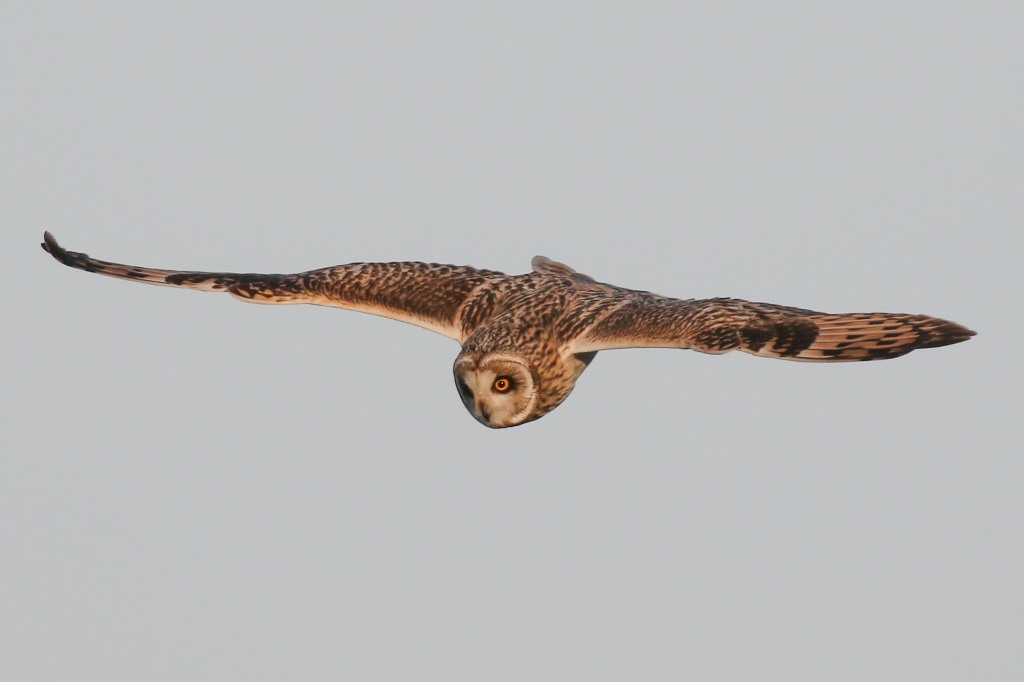
Again, we had to tear ourselves away. We wanted to have a look at the beach, and we had to be back before the car park closed. Walking up through the dunes, we ran into another Short-eared Owl, and watched it hunting right in front of us. Wow! They really were the gift that keeps on giving this afternoon.

When the Short-eared Owl drifted off away from us, we walked down to the fence above the beach. We could see the flock of Snow Buntings some way off to the south, but they looked to be very mobile. They kept flying up and round. We decided to walk back along the beach and try to get a closer look.
There were several Grey Seals hauled out on the sand, and still a couple of mothers with pups. There would have been several thousand here back in December, but the season is almost over and most have now left. Some seal wardens were still on site though to guide everyone round them without disturbing them.
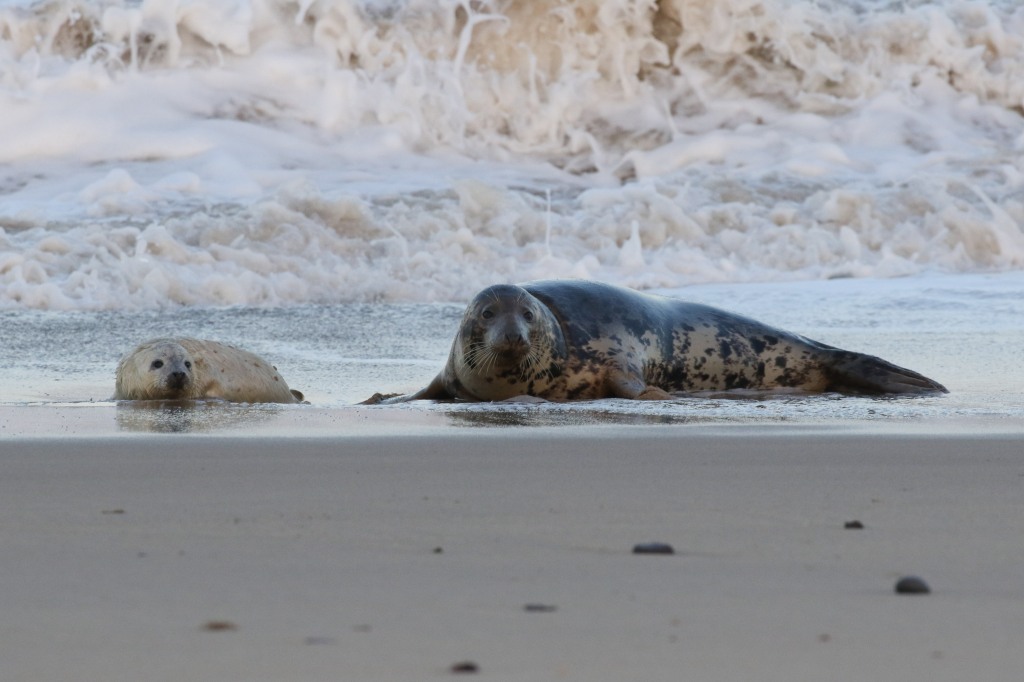
Half way back, we found the Snow Buntings again on the beach. They were still very flighty, but we eventually got some nice views of them in the edge of the dunes. A nice way to round off a great day.
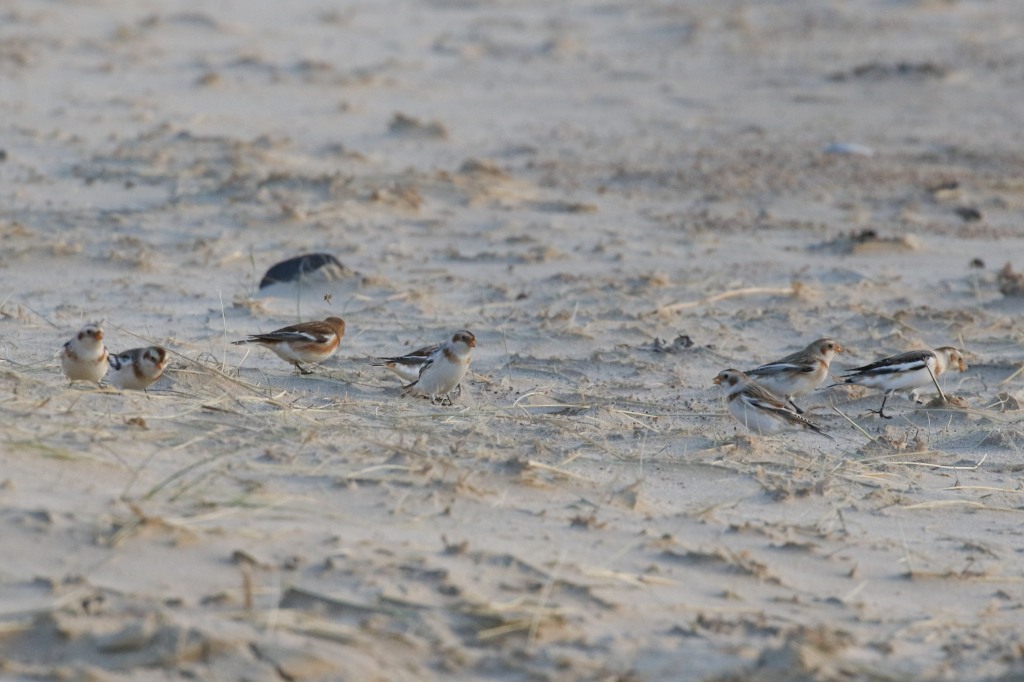
Then we had to hurry back before the car park closed, and after a quick pit stop we piled into the minibus for the long drive home. What a great start to our three days.
No comments:
Post a Comment
Note: only a member of this blog may post a comment.